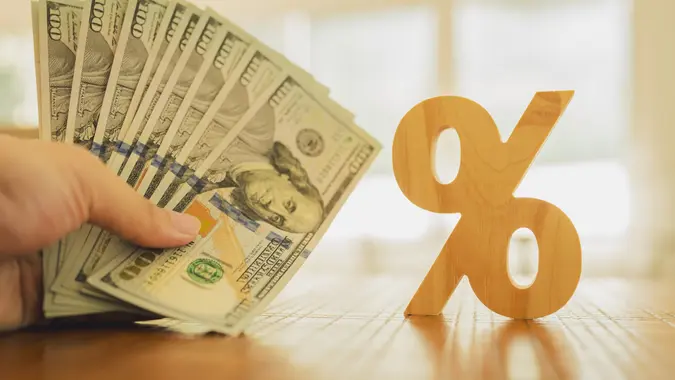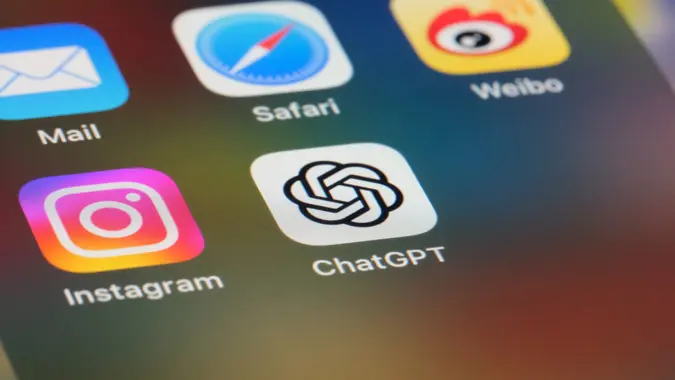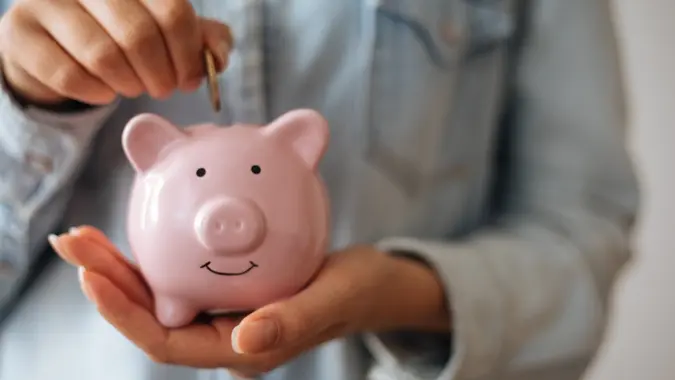Americans’ No. 1 Savings Goal Isn’t To Buy a House or a Car: See What They’re Really Saving Up For

Commitment to Our Readers
GOBankingRates' editorial team is committed to bringing you unbiased reviews and information. We use data-driven methodologies to evaluate financial products and services - our reviews and ratings are not influenced by advertisers. You can read more about our editorial guidelines and our products and services review methodology.

20 Years
Helping You Live Richer

Reviewed
by Experts

Trusted by
Millions of Readers
Ah, the classic American Dream. A house with a white picket fence, 2.5 kids and a Golden Retriever.
Well, for many, that’s not the case anymore. In the world of money and future plans, people used to think buying a house or getting a car was the most important thing to save for. But things have changed, and now many Americans have a new top savings goal.
It’s not what you might expect. It’s actually about making sure they have money saved up for emergencies.
In fact, 44% of Americans are putting their focus on building emergency funds. So, in our exploration of changing financial goals, let’s dive into why so many people are choosing safety over traditional dreams.
Emergency Funds Are at Top of Mind
According to a recent GOBankingRates survey involving 1,037 American adults aged 18 and older from across the nation, it is clear that Americans have a wide range of savings goals, yet there is a consistent focus on future financial security.
Notably, 44% of respondents are actively building emergency funds to safeguard against unforeseen financial challenges, while just 19% are channeling their resources toward securing their retirement.
Other savings objectives include homeownership (13%), vacation planning (8%) and car purchases (6%). Additionally, 3% are investing in education, and 5% are setting aside funds for other substantial purchases.
This data underscores the nation’s diverse financial priorities, with a shared commitment to preparing for an economically stable future.
Discover: 10 Frugal Money Habits That You Need To Embrace
Why It’s a Problem
The reason so many people prioritize building emergency funds is quite straightforward. Another recent GOBankingRates survey found that roughly half of the individuals don’t have any emergency savings at all.
Even among those who do have some savings set aside, many have relatively modest amounts, often around $1,000 or less. This becomes a concern because such sums are barely enough to cover everyday expenses, let alone unexpected setbacks like a car breakdown or a home repair.
As a result, only about one in four people have sufficient savings to tackle emergencies head-on. The majority would have to resort to borrowing money, depleting their regular savings or potentially making the risky move of selling investments or tapping into their retirement funds — actions that come with added costs and future financial uncertainties. Thus, the urgency of prioritizing emergency funds becomes evident as a means to avoid these challenging financial scenarios.
What To Do
According to GOBankingRates’ data, building up your emergency fund is a crucial step toward achieving financial stability and peace of mind. Begin by setting a clear savings goal, typically aiming for three to six months’ worth of living expenses.
To get started, create a budget to gain insight into your income and expenses. Identify areas where you can cut back or reduce spending to free up money for your emergency fund. Whether it’s skipping that daily coffee shop visit or eliminating unnecessary subscription services, every dollar saved can make a difference.
Automation is a powerful tool in your savings arsenal. Set up an automatic transfer from your checking account to your dedicated emergency savings account each time you receive your paycheck. This “pay yourself first” approach ensures that you consistently contribute to your emergency fund without the temptation to spend those funds elsewhere. Don’t be discouraged if you can start only with small contributions; the key is consistency.
As you progress, consider using windfalls like tax refunds, bonuses or monetary gifts to give your fund a boost. Also, explore opportunities to increase your income through side hustles or selling items you no longer need.
This part is important and often overlooked: Regularly review your budget and financial goals, adjusting your savings plan as your circumstances evolve. Building an emergency fund is a gradual process, but it offers invaluable financial security for unexpected situations, making it an important part of a lifelong financial strategy.
 Written by
Written by  Edited by
Edited by 

























